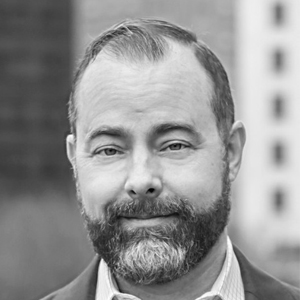- Technology
- SEE MORE
- classical
- general
- talk
- News
- Family
- Bürgerfunk
- pop
- Islam
- soul
- jazz
- Comedy
- humor
- wissenschaft
- opera
- baroque
- gesellschaft
- theater
- Local
- alternative
- electro
- rock
- rap
- lifestyle
- Music
- como
- RNE
- ballads
- greek
- Buddhism
- deportes
- christian
- piano
- djs
- Dance
- dutch
- flamenco
- social
- hope
- christian rock
- academia
- afrique
- Business
- musique
- ελληνική-μουσική
- religion
- World radio
- Zarzuela
- travel
- World
- NFL
- media
- Art
- public
- Sports
- Gospel
- st.
- baptist
- Leisure
- Kids & Family
- musical
- club
- Culture
- Health & Fitness
- True Crime
- Fiction
- children
- Society & Culture
- TV & Film
- gold
- kunst
- música
- gay
- Natural
- a
- francais
- bach
- economics
- kultur
- evangelical
- tech
- Opinion
- Government
- gaming
- College
- technik
- History
- Jesus
- Health
- movies
- radio
- services
- Church
- podcast
- Education
- international
- Transportation
- Other
- kids
- podcasts
- philadelphia
- Noticias
- love
- sport
- Salud
- film
- and
- 4chan
- Disco
- Stories
- fashion
- Arts
- interviews
- hardstyle
- entertainment
- humour
- medieval
- literature
- alma
- Cultura
- video
- TV
- Science
- en
Taking XR from Pilot to Finished Product, with Foundry 45s Dave Beck

Developing a pilot or a proof of concept is among the first steps to introducing XR into your industry, but that\u2019s only going to provide so much ROI unless you can fully implement that idea. Dave Beck from Foundry 45 discusses how to make that leap.\n\n\n\n\n\n\n\nAlan: Hey, everyone, Alan Smithson here. Today, we're speaking with Dave Beck, founder and managing partner at Foundry 45, an immersive technology company that develops enterprise level virtual reality training experiences. They've created over 250 experiences for notable clients such as AT&T, Coca-Cola, Delta, and UPS. We're going to be discussing going from PoCs, pilots, and case studies to full scale deployments. All that and more, on the XR for Business podcast.\n\n\n\nDave, welcome to the show.\n\n\n\nDave: Hey, Alan, thanks so much for having me on here.\n\n\n\nAlan: It's my absolute pleasure. I'm super excited. You guys have been doing so much work in the VR training space. First of all, let's just talk about, what is Foundry 45? How did you get into this? And we'll kick it off from there.\n\n\n\nDave: I guess first off, it's nice to chat with you again. I went back and checked my email, and it looks like the first time you and I talked was way back in 2016. So a lot's happened in that time, hasn't it? So, OK, we put VR to work by creating virtual reality training experiences for enterprise partners. And we specialize in industrial-- think hard skills type training. I've actually been working in immersive technology for almost a decade now. Initially it was in augmented reality, which was something that we added on the side for a SAS product we built, that was actually our main business during that time. And we did a lot of stuff where you would hold up your phone or a piece of industrial equipment, and it would tell you where to wrench on it or how to change the filter, things like that. It was cool technology, but we pretty quickly realized that no one was going to hold a phone or an iPad over a piece of industrial equipment on an oil rig. They weren't going to set it down and start wrenching on something, and then pick it up with greasy hands. [chuckles] So what we wanted to do was hands-free AR, but the technology just wasn't there. We exited that company in 2014, and we were trying to figure out what we wanted to do when we grow up.\n\n\n\nAlan: You exited your company in 2014. Most people didn't even know what this technology was when you guys were exiting your first one and getting into the second. Think about that.\n\n\n\nDave: Yeah. I mean, we were trying to figure out what we wanted to be when we grew up. And one of my co-founders bought an early innovators edition of Samsung Gear VR. Do you remember that one?\n\n\n\nAlan: I have the one with a solid strap on top.\n\n\n\nDave: Yeah. Did you strap the Android phone into the headset?\n\n\n\nAlan: Exactly.\n\n\n\nDave: Yeah. And you could use that camera on the back of the phone as a pass-through.\n\n\n\nAlan: Yes. Well, not very well, but yes, you could.\n\n\n\nDave: Well, yeah, it's funny. You know where this is going, right? Because we wanted to use it for hands-free AR, but it didn't work at all.\n\n\n\nAlan: Not without making people very sick.\n\n\n\nDave: Yeah, the processor wasn't good enough. It was super laggy, which kind of made it nauseating. So that wasn't going to work. But wow, VR was awesome. That's when we made the decision to start down our current path.\n\n\n\nAlan: And that was before ARCore and ARKit. So planer tracking really wasn't a thing. Slim mapping, it was not that easy to do.\n\n\n\nDave: Yeah. I mean, just